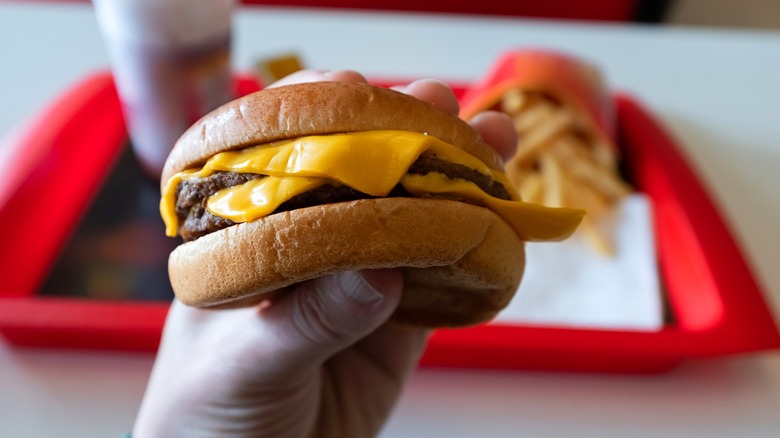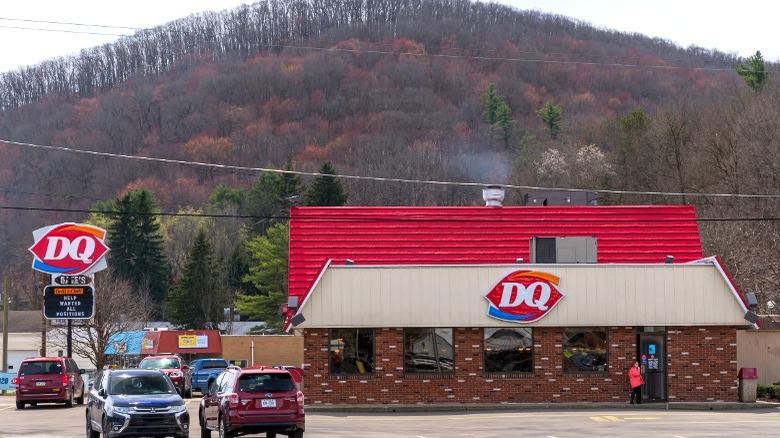The US State With The Most Fast Food Restaurants Per Capita
Fast food is a convenient and accessible option for getting a meal on the table or on the go. In many places, one of these chains is just around the corner and will probably offer a drive-thru, too. Marketing approaches are only getting more aggressive as restaurant giants compete with each other — from fast food mascots you probably forgot about to brand collaborations like the Wendy's Krabby Patty meal. In the heat of it all is the U.S. state with the most fast food per capita: West Virginia.
Research conducted by price-monitoring website Pricelisto compared how many fast food restaurants there were relative to each state's population per every 100,000 residents. Subway, McDonald's, and Wendy's were the most popular choices. Per every 100,000 residents, the average of fast food restaurants in West Virginia totaled 49.04 — the highest of any state, compared to the lowest, which was Vermont at 27.65. West Virginia is one of the poorest states in the country, but recent data suggests that low-income households are spending less on fast food because of inflated prices. So why does West Virginia still host around 868 fast food restaurant locations?
Why low-income states may have more fast food restaurants
When people picture the "Mountain State" they're probably imagining the beautiful Appalachian mountain range before a Subway comes to mind. However, West Virginia has a history of food insecurity (via an analysis by West Virginia University). Food insecurity refers to areas with a high concentration of rurality and low incomes that lack access to nutritious food and high-quality grocery stores, sometimes known as a "food desert." This results in a negative impact on the physical and emotional health of already vulnerable individuals. When people can't easily access healthy food, whether it's a price or convenience issue, they have to rely on alternative solutions.
The relationship between fast food restaurants and struggling communities is a complex one. Low-income and minority areas have a higher per capita exposure to fast food locations. Need drives demand, so fast food companies will build restaurants and create targeted marketing approaches to fill the gap left by more expensive or scarce food sources. Fast food restaurants also provide jobs to the communities they reside in, meaning more people may be able to find work. People need to eat, and this gives them an extra option. Most Americans have enjoyed fast food at one time or another — even pro chefs like Anthony Bourdain have some fast food favorites.

